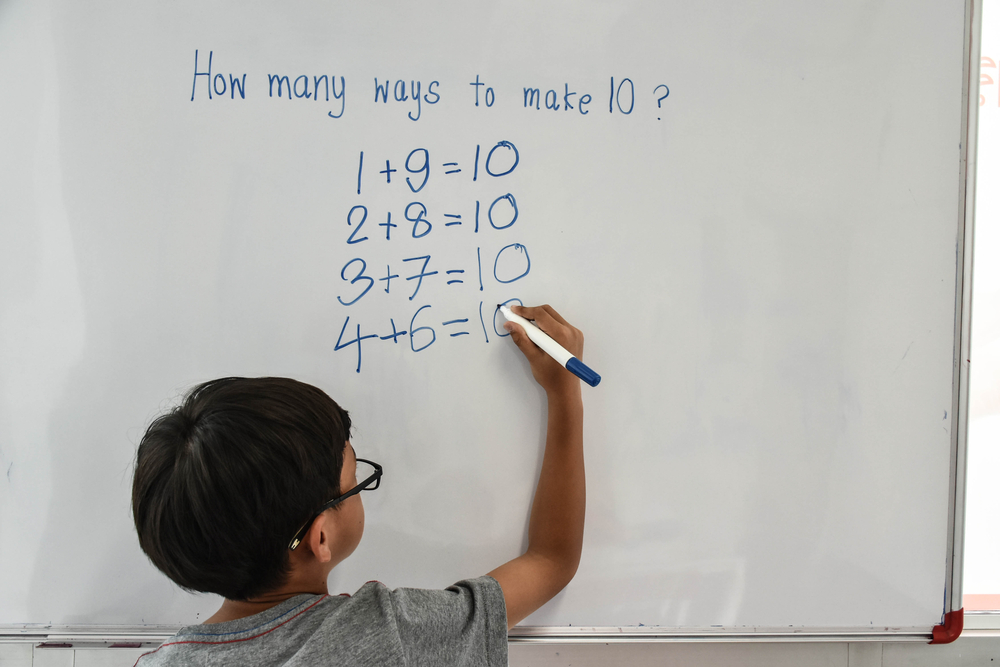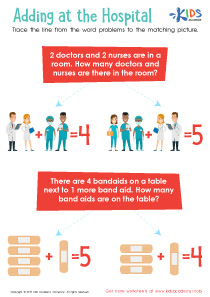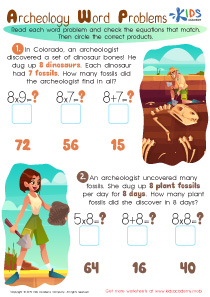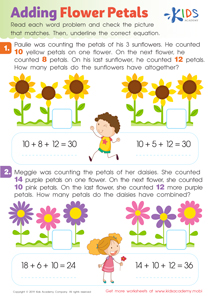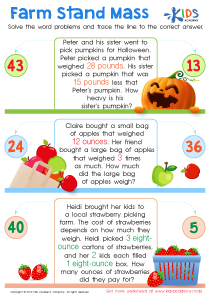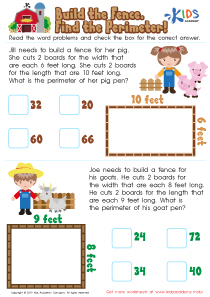Normal Money Word Problems Worksheets for 3-Year-Olds
1 filtered results
-
From - To
Introduce your little ones to the basics of finance with our Normal Money Word Problems Learning Worksheets! Perfectly tailored for three-year-olds, these worksheets combine fun and education, gently introducing concepts of money through simple, engaging problems. Crafted by experts in early childhood education, each sheet uses colorful illustrations and child-friendly problems that make learning about coins and values exciting. Our Learning Worksheets help develop foundational math skills and financial awareness in a playful environment. Start your child’s journey to financial literacy early with these captivating learning tools!
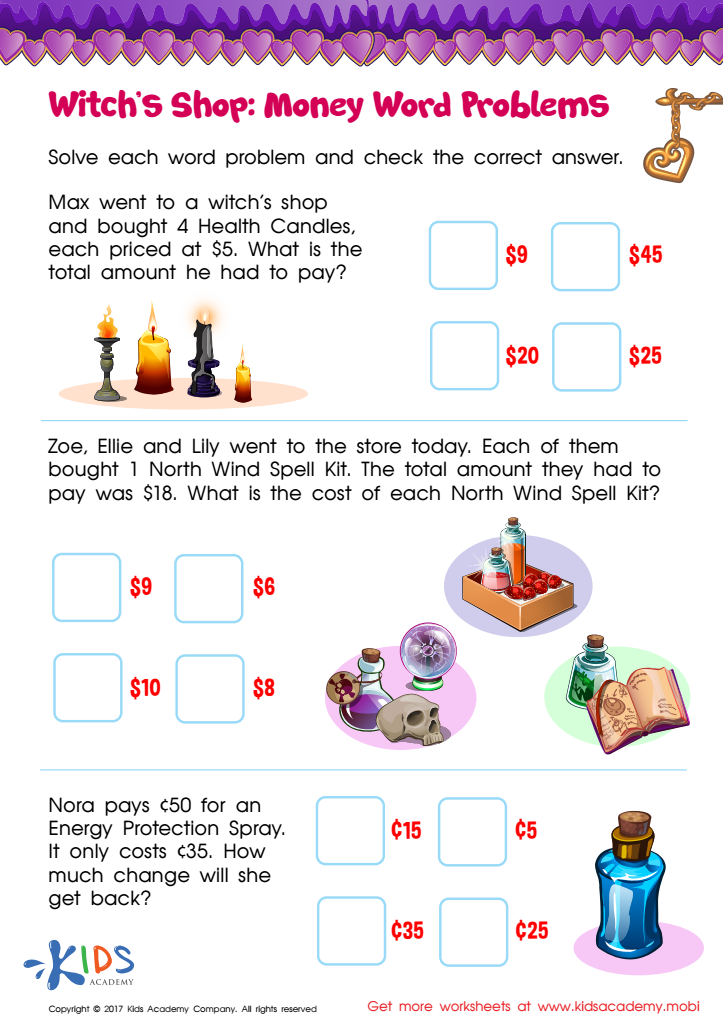

Money Word Problems Printable
Normal worksheets on Money Word Problems, particularly when tailored as learning printables, are an invaluable educational tool for young learners, even as young as three years old. These worksheets are designed not only to introduce children to basic mathematical concepts but also to integrate everyday practical skills such as understanding money and its value. Here's why these learning printables are especially useful:
1. Development of Cognitive Skills: At three years old, children are at a crucial stage of cognitive development. They are beginning to understand the world around them in more complex ways. Learning printables that focus on money word problems help in nurturing their counting skills, recognition of different coins and notes, and understanding simple addition or subtraction, which are foundational elements in mathematics.
2. Real-Life Application: Money is a fundamental aspect of daily life. By incorporating money concepts into worksheets, children can start to make connections between numbers and real-world applications. This not only enhances their mathematical skills but also improves their understanding of how everyday transactions occur, such as buying a toy or a snack.
3. Engagement and Interaction: Young children learn best when they are actively engaged. Learning printables designed with colorful graphics, fun characters, and simple, relatable scenarios draw children in and hold their attention. This makes learning about money not just educational but also enjoyable. Interactive elements such as placing coins on printed images corresponding to their values can make the learning experience tactile, catering to different learning styles.
4. Language Skills: Money word problems on worksheets often involve simple sentences and terminology relating to money, which helps in vocabulary building. Children at the age of three are rapidly expanding their language skills, and by being exposed to new words in a context, such as "price," "cost," "buy," and "sell," they not only learn about math but also enhance their language comprehension and usage.
5. Foundation for Future Learning: Early exposure to fundamental concepts of money management through learning printables sets a strong foundation for more complex mathematical problems and financial literacy as they grow older. Understanding the value of different denominations of money, basic addition and subtraction, and the concept of exchange can prepare children for a smoother transition to more sophisticated financial concepts in later years.
6. Parent and Child Bonding: Working on worksheets together can be a bonding activity for parents and children. It provides an opportunity for parents to explain concepts, share experiences, and spend quality time nurturing their child’s education. This active involvement can lead to a deeper understanding of the child's learning style and progress, which is vital for guiding further educational support.
7. Confidence Building: As children successfully navigate through simple money word problems on their learning printables, they gain confidence in their ability to solve problems and make decisions. This boosts their self-esteem and encourages a positive attitude towards learning and challenges, which is crucial in their overall development.
8. Preparation for School: Early education through such printables helps children adjust to the structured learning environment they will experience in school. By introducing them to worksheets, children learn to follow instructions, complete tasks, and develop patience and focus. These are important skills that will aid them as they enter more formal education settings.
9. Customizable Learning: Learning printables can be easily customized to suit the learning pace and interest of each child. For children who might find certain concepts challenging, these worksheets can be adapted to be more repetitive or simplified. Conversely, for those who grasp concepts quickly, the level of difficulty can be increased, providing a continuous and appropriate challenge.
10. Encourages Curiosity and Questions: Dealing with money-related word problems can spark curiosity about numbers and economics in a broader sense. Children might begin to ask questions about where money comes from, how it is made, and why it has value. This curiosity can lead to a broader educational exploration, feeding their natural desire to learn and understand more about the world.
In conclusion, normal worksheets on Money Word Problems as learning printables are more than just paper and numbers; they are a comprehensive educational tool that engages young learners in a variety of ways. For three-year-olds, these worksheets lay down the early bricks of mathematical understanding, real-world application, and cognitive development, all while being wrapped in a fun, engaging package that stimulates their young minds and fosters an early love for learning.
 Assign to the classroom
Assign to the classroom


